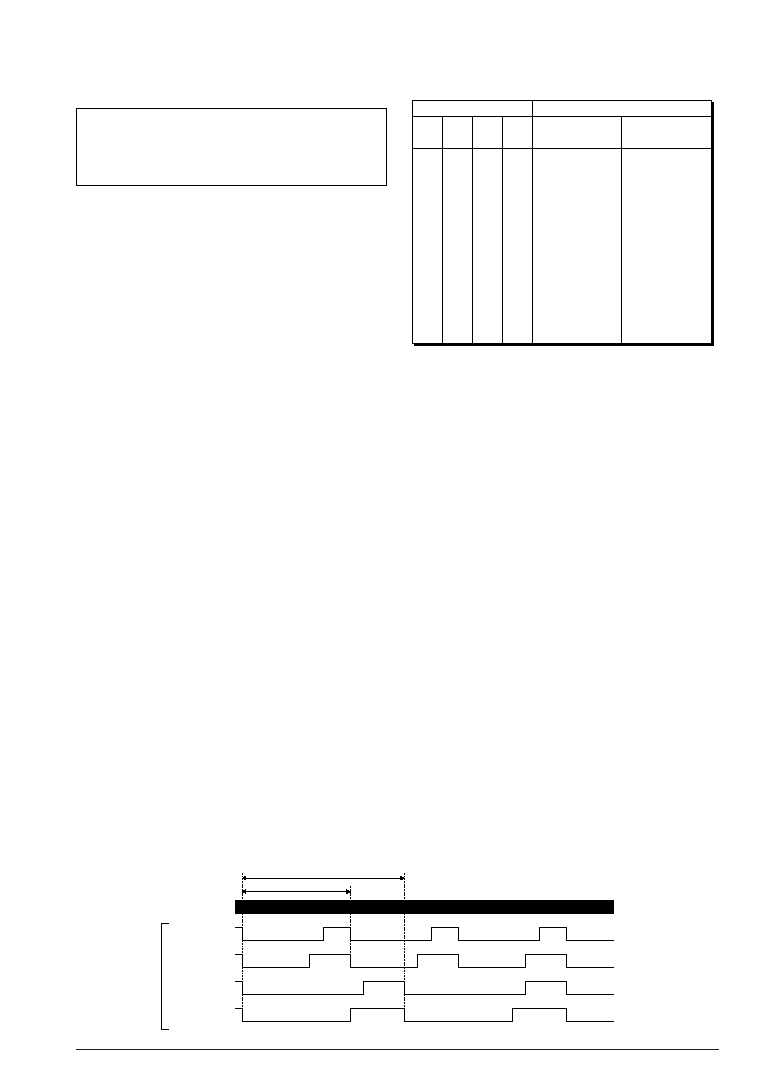- 您現(xiàn)在的位置:買賣IC網(wǎng) > PDF目錄98069 > S1C88848D0A0100 8-BIT, MROM, 8.2 MHz, MICROCONTROLLER, UUC192 PDF資料下載
參數(shù)資料
| 型號: | S1C88848D0A0100 |
| 元件分類: | 微控制器/微處理器 |
| 英文描述: | 8-BIT, MROM, 8.2 MHz, MICROCONTROLLER, UUC192 |
| 封裝: | DIE-192 |
| 文件頁數(shù): | 26/174頁 |
| 文件大?。?/td> | 1304K |
| 代理商: | S1C88848D0A0100 |
第1頁第2頁第3頁第4頁第5頁第6頁第7頁第8頁第9頁第10頁第11頁第12頁第13頁第14頁第15頁第16頁第17頁第18頁第19頁第20頁第21頁第22頁第23頁第24頁第25頁當(dāng)前第26頁第27頁第28頁第29頁第30頁第31頁第32頁第33頁第34頁第35頁第36頁第37頁第38頁第39頁第40頁第41頁第42頁第43頁第44頁第45頁第46頁第47頁第48頁第49頁第50頁第51頁第52頁第53頁第54頁第55頁第56頁第57頁第58頁第59頁第60頁第61頁第62頁第63頁第64頁第65頁第66頁第67頁第68頁第69頁第70頁第71頁第72頁第73頁第74頁第75頁第76頁第77頁第78頁第79頁第80頁第81頁第82頁第83頁第84頁第85頁第86頁第87頁第88頁第89頁第90頁第91頁第92頁第93頁第94頁第95頁第96頁第97頁第98頁第99頁第100頁第101頁第102頁第103頁第104頁第105頁第106頁第107頁第108頁第109頁第110頁第111頁第112頁第113頁第114頁第115頁第116頁第117頁第118頁第119頁第120頁第121頁第122頁第123頁第124頁第125頁第126頁第127頁第128頁第129頁第130頁第131頁第132頁第133頁第134頁第135頁第136頁第137頁第138頁第139頁第140頁第141頁第142頁第143頁第144頁第145頁第146頁第147頁第148頁第149頁第150頁第151頁第152頁第153頁第154頁第155頁第156頁第157頁第158頁第159頁第160頁第161頁第162頁第163頁第164頁第165頁第166頁第167頁第168頁第169頁第170頁第171頁第172頁第173頁第174頁

S1C88848 TECHNICAL MANUAL
EPSON
113
5 PERIPHERAL CIRCUITS AND THEIR OPERATION (Remote Controller)
5.13.2 Mask option
R26 output port specification
R26 .......... ■
■ DC output
_________
■
■ TOUT output
■
■ REM output
The R26 output port can be configured for REM
_________
output, TOUT output (TOUT inverted output) or
general-purpose DC output by mask option.
Selecting REM output allows remote control carrier
output by the control described in Sections 5.13.3
through 5.13.5. Refer to Section 5.5, "Output Ports
_________
(R ports)", for how to control DC output and TOUT
output.
5.13.3 Carrier
The carrier is generated by the carrier generation
circuit using the OSC3 clock as the source clock.
The carrier cycle and duty ratio selections and the
carrier generation circuit ON/OFF control can be
done by software.
The control for the carrier is same procedure for
both the soft-timer mode and the hard-timer mode.
Perform the carrier settings before starting the
transmission in each mode.
The carrier cycle can be selected as a division ratio
of the OSC3 clock using the REM carrier cycle
setting register RCDIV. When "0" is written to
RCDIV, fOSC3/64 is selected and when "1" is
written, fOSC3/96 is selected.
The carrier duty ratio is set as shown in Table
5.13.3.1 using the REM carrier duty setting register
RCDUTY0–RCDUTY3. The selectable values and
range depend on the RCDIV value. When RCDIV =
"1", the remote controller does not output the REM
signal if RCDUTY is "1100" or more. When RCDIV
= "0", setting RCDUTY to "0100" or more selects the
same duty ratio as RCDUTY = "0011".
Carrier settings can be done even when the OSC3
oscillation circuit is in OFF status. Furthermore,
when these are set once, the set contents are
maintained until an initial reset is performed.
Note: The setting of RCDIV and the RCDUTY should
be done when the REM circuit is OFF (REMC
= "0") before starting remote transmission. If
changing the contents when the REM circuit is
ON, it may cause a malfunction.
Table 5.13.3.1 Carrier duty ratio
3
1
0
2
0
1
0
1
0
1
0
1
0
1
0
1
0
1
0
1
0
1
0
1
0
RCDIV = "1"
(fOSC3/96)
12/24
11/24
10/24
9/24
8/24
7/24
6/24
5/24
4/24
3/24
2/24
1/24
RCDIV = "0"
(fOSC3/64)
–
4/8
3/8
2/8
1/8
RCDUTY
Carrier duty ratio
The carrier generation circuit is turned ON and
OFF by the REM carrier ON/OFF register REMC.
By writing "1" to REMC, the carrier generation
circuit goes ON and generates the carrier. When
REMC is set to "0" by writing, the carrier generation
circuit goes OFF and the carrier generation stops.
The OSC3 clock is divided to generate the carrier.
Therefore, the OSC3 oscillation circuit must be ON
before starting remote output. Remote output
should be done when the OSC3 oscillation has
stabilized. Make sure that the OSC3 oscillation has
stabilized before starting a remote controller. After
turning the OSC3 oscillation circuit ON until the
oscillation stabilizes, an interval of several 100 sec
to several 10 msec is required. Therefore, you
should allow an adequate waiting time after
turning the OSC3 oscillation circuit ON before
starting a remote control output. (The oscillation
start time will vary somewhat depending on the
oscillator and on external parts. Refer to the
oscillation start time example indicated in Chapter
7, "ELECTRICAL CHARACTERISTICS".)
At initial reset, OSC3 oscillation circuit is set to ON
status.
Figure 5.13.3.1 shows the carrier waveform.
Note: Except when outputting the remote control
waveform, REMC should be fixed at "0" to
prevent outputting unnecessary waveforms
and to reduce current consumption. However
at initial reset, the REMC register is set to "1"
for initializing the carrier generation circuit.
The register must not be set to "0" until after
initialization (within 32 machine cycles).
OSC3 clock
64 clocks
96 clocks
1/64 division
2/8 duty
1/64 division
3/8 duty
1/96 division
6/24 duty
1/96 division
8/24 duty
Carrier
waveform
Fig. 5.13.3.1 Carrier waveform
相關(guān)PDF資料 |
PDF描述 |
|---|---|
| S1C8F360F | 8-BIT, FLASH, 8.2 MHz, MICROCONTROLLER, PQFP176 |
| S1D13305F00B | 640 X 256 PIXELS CRT CHAR OR GRPH DSPL CTLR, PQFP60 |
| S1D13305F00A | 640 X 256 PIXELS CRT CHAR OR GRPH DSPL CTLR, PQFP60 |
| S1D13600F00A | CRT OR FLAT PNL GRPH DSPL CTLR, PQFP64 |
| S1D13700F02A100 | 320 X 240 PIXELS CRT OR FLAT PNL GRPH DSPL CTLR, PQFP64 |
相關(guān)代理商/技術(shù)參數(shù) |
參數(shù)描述 |
|---|---|
| S1C8F360D411000 | 功能描述:16位微控制器 - MCU 8-bit Flash 60KB LCD Dr. 51 x 32 RoHS:否 制造商:Texas Instruments 核心:RISC 處理器系列:MSP430FR572x 數(shù)據(jù)總線寬度:16 bit 最大時鐘頻率:24 MHz 程序存儲器大小:8 KB 數(shù)據(jù) RAM 大小:1 KB 片上 ADC:Yes 工作電源電壓:2 V to 3.6 V 工作溫度范圍:- 40 C to + 85 C 封裝 / 箱體:VQFN-40 安裝風(fēng)格:SMD/SMT |
| S1C8F360D511000 | 功能描述:16位微控制器 - MCU 8-bit Flash 60KB LCD Dr. 51 x 32 RoHS:否 制造商:Texas Instruments 核心:RISC 處理器系列:MSP430FR572x 數(shù)據(jù)總線寬度:16 bit 最大時鐘頻率:24 MHz 程序存儲器大小:8 KB 數(shù)據(jù) RAM 大小:1 KB 片上 ADC:Yes 工作電源電壓:2 V to 3.6 V 工作溫度范圍:- 40 C to + 85 C 封裝 / 箱體:VQFN-40 安裝風(fēng)格:SMD/SMT |
| S1C8F360F413100 | 功能描述:16位微控制器 - MCU 8-bit Flash 60KB LCD Dr. 51 x 32 RoHS:否 制造商:Texas Instruments 核心:RISC 處理器系列:MSP430FR572x 數(shù)據(jù)總線寬度:16 bit 最大時鐘頻率:24 MHz 程序存儲器大小:8 KB 數(shù)據(jù) RAM 大小:1 KB 片上 ADC:Yes 工作電源電壓:2 V to 3.6 V 工作溫度范圍:- 40 C to + 85 C 封裝 / 箱體:VQFN-40 安裝風(fēng)格:SMD/SMT |
| S1C8F360F513200 | 功能描述:16位微控制器 - MCU 8-bit Flash 60KB LCD Dr. 51 x 32 RoHS:否 制造商:Texas Instruments 核心:RISC 處理器系列:MSP430FR572x 數(shù)據(jù)總線寬度:16 bit 最大時鐘頻率:24 MHz 程序存儲器大小:8 KB 數(shù)據(jù) RAM 大小:1 KB 片上 ADC:Yes 工作電源電壓:2 V to 3.6 V 工作溫度范圍:- 40 C to + 85 C 封裝 / 箱體:VQFN-40 安裝風(fēng)格:SMD/SMT |
| S1C8F626 | 制造商:EPSON 制造商全稱:EPSON 功能描述:8-bit Single Chip Microcomputer |
發(fā)布緊急采購,3分鐘左右您將得到回復(fù)。